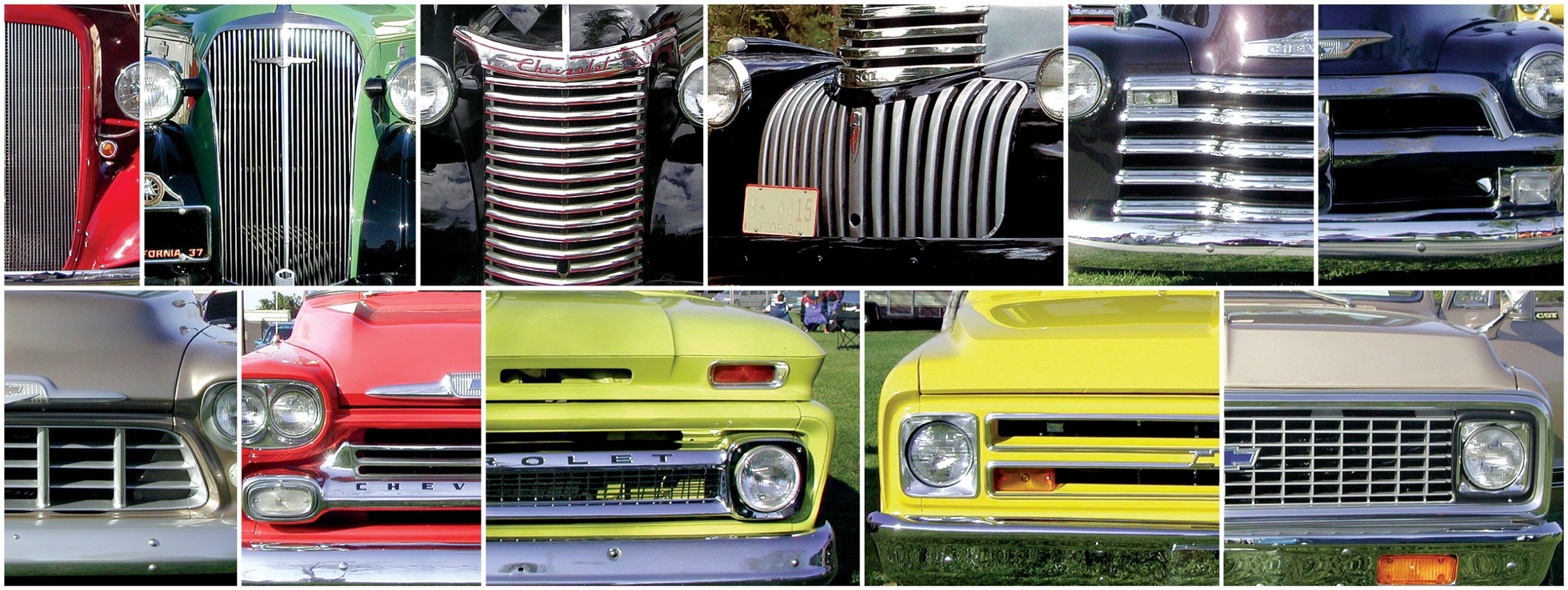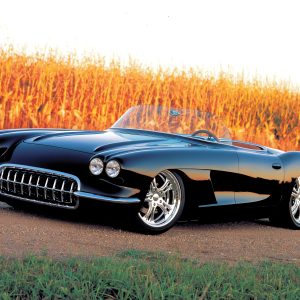This Is Possibly the World’s Most Powerful Four-Barrel Big Block
 It’s time to start a new chapter in the world of Chevrolet V-8 horsepower. One of the top aftermarket manufacturers of Chevy-type engine blocks, heads and intake manifolds, Dart Machinery LTD has raised the bar again. By following what racers ask for, Dart has positioned itself in the leading role of giving racers and enthusiasts alike what they want: Cubic inches and an all-new set of huge, Pro Stock-style heads with an 8-inch-tall, four-barrel intake manifold to match.
It’s time to start a new chapter in the world of Chevrolet V-8 horsepower. One of the top aftermarket manufacturers of Chevy-type engine blocks, heads and intake manifolds, Dart Machinery LTD has raised the bar again. By following what racers ask for, Dart has positioned itself in the leading role of giving racers and enthusiasts alike what they want: Cubic inches and an all-new set of huge, Pro Stock-style heads with an 8-inch-tall, four-barrel intake manifold to match.
For the record, Dart’s Big M big block is cast from high-grade iron alloy, and out of the box it features a minimum bore/stroke of 4.250-inch by 4.50-inch. It can be bored out to a maximum of 4.625 inches and stroked to 4.70 inches. For those of you who are a little faint of heart, this equates to something in the neighborhood of 600 ci. Available deck heights are 9.8 inches (short deck) and 10.2 inches (tall deck). And, depending on the deck height and bore size, the bare block can weigh anywhere from 250 to 280 pounds.
 The engine shown here was built at Quarter Mile Performance, in Chatsworth, California. QMP builds and maintains all kinds of race, marine and street small- and big-block engines, in its ultra-clean and modern facility. This engine has a 4.60-inch bore and a 4.250-inch stroke, which equates to a whopping 565 ci. With standard-size big-block heads and 396/402/454 decals on the valve covers, few would know that it was not a stocker—well, at least until the light turns green.
The engine shown here was built at Quarter Mile Performance, in Chatsworth, California. QMP builds and maintains all kinds of race, marine and street small- and big-block engines, in its ultra-clean and modern facility. This engine has a 4.60-inch bore and a 4.250-inch stroke, which equates to a whopping 565 ci. With standard-size big-block heads and 396/402/454 decals on the valve covers, few would know that it was not a stocker—well, at least until the light turns green.
Standard-size Chevy big-block heads fit the Big M like a glove. Is there anything bigger than a Chevy-type big-block head? You bet. Some five years ago, individually prepared Pro Stock heads were a huge secret. With 500 ci, they had to flow gobs of air. Someone got the idea to make the combustion chamber smaller, and raise the intake port—and we mean that literally. They also discovered that an oval-shaped intake port was better in this application at cylinder filling Suddenly, the top Pro Stock cars were punching at 200 mph and easily breaking into the 7s. These tall heads were a large reason why.

Five years later, Dart has created a similar head called the Big Chief II. It is an 11-degree head cast in 355 T6 aluminum alloy, and weighs a mere 42 pounds bare. The Big Chief II is approximately 2 inches taller than a production-style Chevy big-block head. Four of the cylinders take special offset roller rocker arms produced by Jesel and T&D. The titanium valves have stems that measure 6.60 inches in length for the intakes, and 6.450 inches for the exhausts. This is about 1.5 inches longer than a standard Chevy performance big-block valve. Manley valves are recommended by QMP. The maximum intake port flow is 540 cfm, while the exhaust flow is 375 cfm. These heads can accommodate valve lift of 0.910 inch, which when you think about it, is large enough to create an echo chamber! Lastly, besides the Big M block, these heads can be used on GM Mark IV, GM Gen-V and GM Gen-VI big blocks. So go for it.
The Big Chief II heads have tiny 56cc combustion chambers. With a flattop piston, the compression ratio is 16:1. QMP stressed that dished-type pistons and lower deck pistons are available, which lower the compression for street use. The reason for the taller heads is to get the intake port higher for a straight shot at the intake valve and combustion chamber. This is basic tech stuff that has taken years to develop, and it makes a ton of horsepower. A standard small-block head port measures in at 23 degrees. Today’s race heads are anywhere from 10 to 15 degrees. They offer superior air/fuel mixture delivery, and QMP feels that when everything is said and done, they are worth an increase of 200 hp over the best shorter heads. The Big Chief IIs cost in the area of $5,000 a pair bare. Assembled, they will set you back around $12,000. Remember, speed costs money, so how fast do you want to go?

QMP’s 565 four-barrel race engine features a Crower Ultra-Light crankshaft with Bill Miller connecting rods and pistons. The rods are 6.385 inches in length. A Comp Cams roller camshaft has a split lift of 0.850/0.775-inch, with a split duration of 282/292 degrees, all on a 114-degree lobe center angle. The roller lifters are Crower designs, which measure 0.937 inches. Jesel items include the front-drive distributor, offset roller rocker arms and belt-drive timing assembly.
The intake manifold is a Dart oval-port Big Chief. It has been CNC-ported and retails at $750. Like the heads, it has also been polished. The four-barrel carburetor is a highly modified Holley 1150cfm Dominator by DaVinci. It is a double-pumper with individual throttle arms plus external jets to the venturi for more fuel delivery. QMP feels that the dragster this engine will power should run 7 seconds flat in the quarter mile. Isn’t technology great?
In the street machine driveline department, there are many readily available, beefed-up automatic transmissions and differentials that can handle the Dart 565 and its 1,000-plus hp. And when we compare this engine to what was hot only a decade or two ago, we think of ourselves as performance paupers. QMP thinks this engine compares like apples to diamonds—and it’s right. There is no earthly comparison to what has come before this behemoth. It’s that impressive.

In summation, this is not a radical engine that is on the edge. And it is not a grenade just waiting to “happen.” This is one stout engine that will be used in a dragster with a throttle-stop, using a dial-in of say 7.90 ET, and it will run for a very long time. We can also think of so many other applications this combination will fit that it becomes not a dream engine, but one that will find its way into numerous engine compartments.
For the record, on an electronically controlled dynamometer with no hard flogging and no sweating the tune-up, this particular motor produced 1,037 hp at 7,200 rpm, and 806 lb-ft of torque at 5,500 rpm. This, my friends, was all with a well-engineered four-barrel, race gas and good, old atmospheric pressure—just the way we like it.
Article Sources
Quarter Mile Performance
818/576-0816
9530 Owensmouth, Unit 2 Chatsworth, CA 91311















